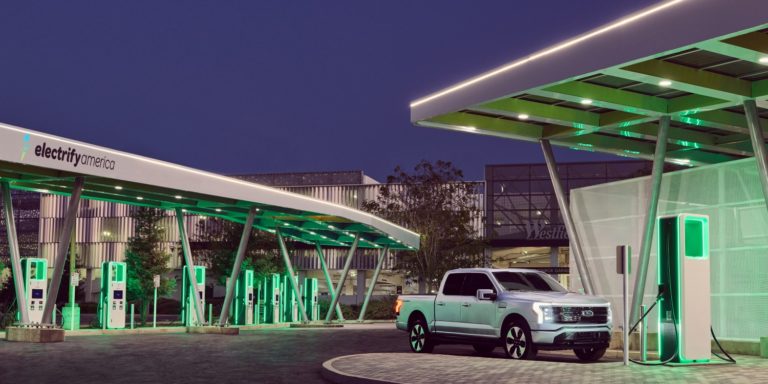US Senate to move forward with new EV tax credit
The Democrats in the US Senate have presented a new bill on the tax credit for electric cars. This bill retains the amount of 7,500 dollars, but the upper limit of 200,000 electric cars per manufacturer is removed – which would make Tesla and GM eligible again. The law has not yet been passed, but at this stage, it appears to be a mere formality.
The background for the sudden change is that the Democratic senator for West Virginia, Joe Manchin, had blocked the previous plans of the Democrats in the US Senate – at least those that concerned climate protection. Now the senator from the rather conservative state has given up his opposition to US President Biden’s ‘Build Back Better’ plan – but only after he had personally negotiated with Biden several times and achieved numerous concessions in the overall package. After several cuts, only 670 billion US dollars (about 656 billion euros) are left of the initially almost two trillion dollars, which the infrastructure and climate protection package still includes.
On the EV subsidy: that the Democrats – also because of Manchin’s opposition – had abandoned earlier plans to increase the credit to 12,500 dollars in June, the new bill provides that the federal tax credit of 7,500 dollars per electric vehicle will be maintained.
However, there are some important changes: for example, the credit no longer applies generally to all electric vehicles, which are now subject to certain conditions to qualify for the credit. Essentially, the car must have been assembled in North America. There is a $3,750 tax credit if at least 40 per cent of the battery-critical minerals come from the United States or countries with a free trade agreement with the United States. The other $3,750 is available if at least 50 per cent of the vehicle’s battery components come from the United States or countries with a free trade agreement with the United States. Over the years, both percentages are planned to continue to rise.
This is clearly intended to strengthen the North American battery industry and EV value creation. However, at least temporarily, this could mean that some models are no longer fully eligible, even if they are built in the US. Currently, many US carmakers and their battery partners still source preliminary products from Asia.
Other restrictions on the subsidy concern the price of eligible vehicles. Electric sedans are only eligible for the tax credit up to a price of $55,000, according to the draft; for electric transporters, electric SUVs or electric pickups, the price limit is $80,000, according to Electrek. And only people with an adjusted gross income of less than $150,000 – or $300,000 for joint filers – are now eligible to apply.
In return, the so-called manufacturer’s cap will no longer apply. The regulation with the cap of 200,000 vehicles already dates back to 2009. If a manufacturer reaches this limit, the tax credit will be reduced by 50 per cent (i.e. to $3,750) for vehicles sold in the next six months. For another six months, the tax credit will be halved again to $1,875 before automatically expiring one year after the cap is reached. GM and Tesla have already exceeded the mark for several years. Now that this cap has been removed, e-cars from Tesla and GM are also eligible again.
For used electric cars, there is to be a tax credit of 30 per cent of the value of the used electric vehicle with a cap of $4,000. The used car must be “at least two model years” old at the time of sale, cost no more than $25,000 and be purchased through a dealer. However, to avoid a double subsidy for the vehicle, a vehicle can only be tax-deductible once – if this has already been done when buying a new car, a used car subsidy for this vehicle is probably not possible.
As previously stated, this is still a draft bill, not a law. We can assume, however, that with Manchin’s support and the narrow majority of Democrats in the Senate, the bill would now be able to pass the legislative process after more than a year of negotiations.





2 Comments